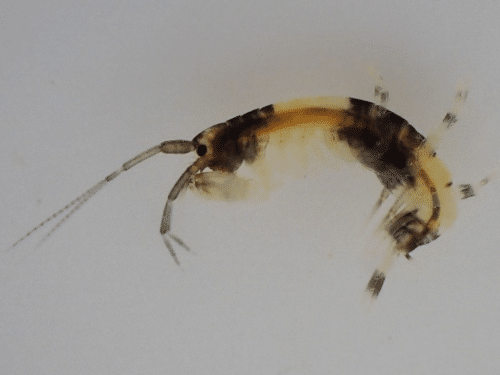In a breakthrough for marine biology, researchers in Japan have identified a new species of crustacean with striking panda-like coloration. Named Melita panda, this discovery underscores the importance of taxonomy for biodiversity conservation.
In an extraordinary discovery decades in the making, a new species of crustacean boasting panda-like black-and-white coloring has been confirmed on the Japanese coast. The species, named Melita panda, was initially found in the 1990s but has now been officially classified as new to science.

Credit: Ko Tomikawa/Hiroshima University
Melita panda is a member of the Melitidae family, a group of shrimp-like amphipods known for their global diversity. The details of this new discovery have been published in the latest issue of ZooKeys.
This discovery emphasizes the importance of studying species taxonomy as a first step toward conservation.
“Despite the fact that biodiversity conservation is a global issue, species diversity and other aspects of biodiversity are still not fully understood,” Ko Tomikawa, a professor at Hiroshima University’s Graduate School of Humanities and Social Sciences, said in a news release.
The discovery of Melita panda brings Japan’s total number of known Melita amphipods to 17. Found in the intertidal waters of Wakayama Prefecture, researchers believe that numerous unidentified species may still inhabit Japan’s coastal zones.
“Study on the amphipod Crustacea in the coastal zone of Japan is lagging behind. In order to accurately assess species diversity, taxonomic studies are necessary,” added Tomikawa. “We hope the discovery of a new species of amphipod with the familiar coloring of the panda pattern will increase the public’s interest in biodiversity and taxonomy.”
To identify Melita panda, the scientists undertook both a morphological study and a molecular phylogeny analysis using genomic DNA.
This dual approach not only highlighted the unique physical attributes of the species, such as its distinctive gnathopods and setae, but also mapped its evolutionary relationships with other Melita amphipods.
The molecular phylogeny analysis revealed that Melita panda is closely related to Melita nagatai and Melita koreana, forming a monophyletic group with these species, all sharing a common ancestor in Melita hoshinoi.
“Hopefully, a detailed study of the ecology and behavior of Melita panda will reveal the reason for its panda pattern,” added Tomikawa.
The broader implications of this discovery extend well beyond Melita panda.
“Further taxonomic studies on amphipods in investigated areas are expected to lead to the discovery of additional new species,” Tomikawa added. “Continued taxonomic studies are expected to elucidate the biodiversity in the coastal environments of the Japanese archipelago and provide important basic data for species conservation.”

